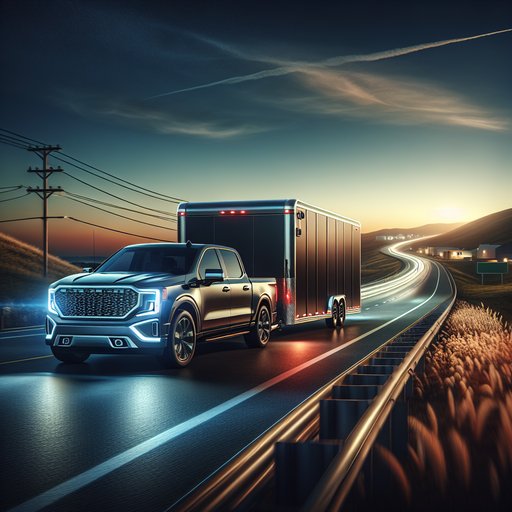
We hitched a 24-foot enclosed car hauler to a 2024 Ford F-150 3.5L EcoBoost with the Max Tow package to evaluate real-world towing stability, trailer sway control, the integrated brake controller, and Ford’s backup assist interface over 400 miles of highways, grades, wind, and tight campsites.
Our test truck was a 2024 F-150 Lariat 4x4 with the 3.5-liter EcoBoost (400 hp/500 lb-ft), 10-speed automatic, 3.55 axle, and Max Tow. Rated towing on this spec is over 13,000 lb with payload around 1,800 lb, and it includes integrated trailer brake controller, smart trailer features, and Tow/Haul mode. Tires were LT275/60R20 all-terrains at 44 psi rear when loaded. The trailer was a steel 24-foot enclosed hauler at 7,500 lb loaded, with 920 lb on the tongue (about 12%), verified by a tongue scale.
We used a weight-distribution hitch with built-in sway control and connected via the 7-pin. Ambient ranged 62–88°F with steady 15–20 mph crosswinds and gusts to 28 mph on an exposed interstate segment. Stability at speed was confident. At 65–70 mph the F-150 tracked straight with minimal steering input, and the rear suspension remained composed over bridge joints.
Passing semis produced a brief push-pull, but the combination settled quickly. Tow/Haul kept the 10-speed in the meat of the torque curve (mostly 7th–9th on flats). On a 6% downhill, grade shifting held 3rd–4th without hunting, and we measured 184–196°F transmission temps and 210–214°F coolant—well within bounds. Trailer Sway Control stayed in the background under normal conditions.
To provoke it, we reduced WD tension and performed a gentle 0.3 Hz steering weave at 60 mph in crosswinds; the system intervened subtly with individual brake pulses and a muted throttle rollback, flagged by the dash icon. It corrected the oscillation within two cycles without feeling intrusive. Re-tightened WD eliminated the need for intervention. The takeaway: set up your hitch correctly first, rely on TSC as a safety net.
The integrated brake controller paired cleanly with our electric drum brakes. The truck detected the trailer immediately and defaulted to medium gain; we settled at 5.5 for smooth, proportional stops. The manual squeeze lever is progressive and easy to modulate, and the cluster shows live brake output. Effort settings (Low/Med/High) change initial bite as advertised.
We didn’t have an electric-over-hydraulic rig to verify compatibility, but menu options for EOH are present. Averaged towing economy was 10.8 mpg at an indicated 65 mph; without trailer we saw 20.2 mpg. Ford’s Pro Trailer Backup Assist and Hitch Assist reduce stress. Initial setup took five minutes to input trailer length/axle count; the UI overlays clear guidelines and prompts, and the surround-view cameras minimize blind spots.
Using the backup assist control to “steer the trailer” felt natural after a brief learning curve, with minimal latency and precise corrections up to about 5 mph. Hitch Assist reliably centered the ball to the coupler on the first try, even in crosswind. Night usability is strong thanks to bed/receiver lighting and high-contrast graphics. Overall, the F-150’s towing suite is cohesive and effective.
It tows 7,500 lb with composure, the sway control intervenes predictably when needed, the brake controller is smooth and informative, and the backup UI meaningfully reduces single-person setup time. Recommendation: invest the time to dial in tongue weight (10–15%), tension the WD correctly, and set brake gain with a few 25–30 mph test stops—do that, and this truck’s tech makes long tows easier and safer.












